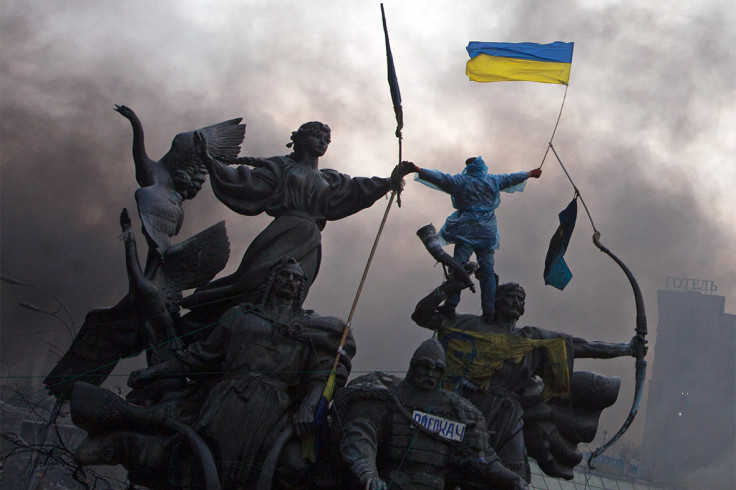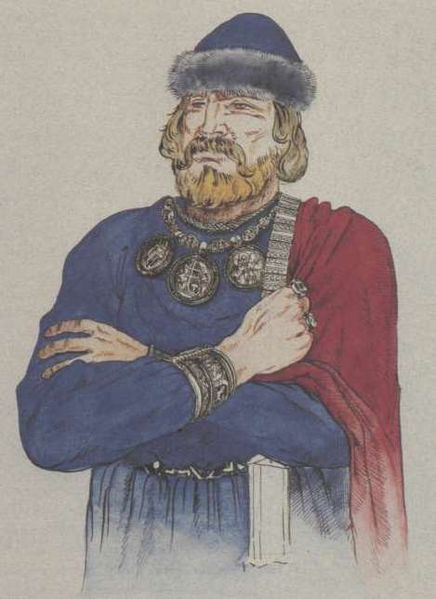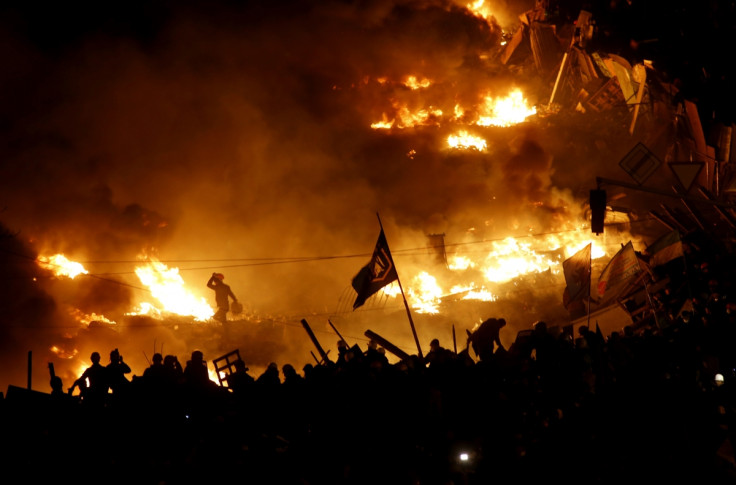Bloody Ukraine: Kiev's Violent History - From Mongols to EuroMaidan2014

Kiev was founded, according to the legend, by three brothers and named after the eldest one, Kyi, between 5th and 6th century. Kiev is translated as "belonging to Kyi".

According to historical data, population in Kiev first experienced violence and genocide with the Mongol invasion, which took place in 1240.
1240 Mongol Invasion and the Siege of Kiev
The Mongols began their invasion of Rus in 1237.
In 1239 Mongolian army leader Möngke fell in love with the beauty of Kiev and offered the city terms for surrender.
However, Kiev refused and killed Mongol envoys.
One year later, the Mongol army under the rule of Batu Khan, stormed Kiev and burned down most of the city.
Out of 50,000 inhabitants before the invasion, about 2,000 survived.
Kiev became part of the Grand Duchy of Lithuania after the Battle at Blue Waters in 1362 and lived a phase of relative peace until 1482.
The Sack of Kiev
On 1 septemeber 1482, a Tartar army from the Crimea attacked Kiev, according to document: "The Sack of Kiev of 1482 in Contemporary Muscovite Chronicle Writing"
While military governor Pan Ivan Khodevich escapeed (but he was then recaptured), dozens of people were buried to death during the brutal sack of the city.
Battle of Kiev 1918
After the "January Uprising" on 29 January 1918, Bolshevist troops took Kiev by storm.
The storming of Kiev took place during the ongoing peace negotiations at Brest-Litovsk in February 1918.
The operation resulted in occupation of the city by Bolsheviks troops and evacuation of the Ukrainian government to Zhytomyr.
Russo-Polish War 1920
Polish commander Josef Pilsudski launched a massive offensive towards Kiev and Soviet general Aleksandr Yegorov suffered terrible losses in men and equipment.
1930: Genocides, Famine and Suppression of Rights
In the 1930s, Kiev suffered a devastating famine and the process of Stalinization, according to which policies and practices of dictator Joseph Stalin had to be adopted.
In the late 1930s, clandestine mass executions began in Kiev. Thousands of Kievites were arrested in the night, hurriedly court-martialled, shot and buried in mass graves.

The mass burials in Bykivnia are the largest ones in Ukraine. Preliminary estimates indicate that during 1937-1941 more than 100,000 Ukrainians were destroyed and secretly buried here. Four state commissions were created in connection with the Bykivnia burials: in 1944, 1971, and 1988-1989. To this day the law enforcement organs have not initiated any criminal proceedings in connection with Bykivnia.
Millions of Ukranians died during the man-made famine known as "Holomodor".
According to some historians, the Soviet leadership used the man-made famine to attack Ukrainian nationalism, and thus the famine is sometimes referred to as "Famine-Genocide".
Kievans also suffered from the controversial Soviet political policy of that time. While encouraging lower-class Ukrainians to pursue careers and develop their culture, the Communist regime adopted harsh oppression of political freedom, Ukraine's autonomy and religion.
World War II
Germans invaded Kiev in 1941. The city witnessed one of the worst massacres in its history, as at least 33,771 Jews from Kiev and its suburbs were massacred by SS troups at the ravine called Babi Yar.
Babi Yar was a site of additional mass murders of captured Soviet citizens over the following years, including Ukrainians, Romani, war prisoners and anyone suspected in aiding the resistance movement.
Suppression Post WW2
Systematic oppression of pro-Ukrainian intellectuals, referred to as "nationalists", was carried under the propaganda campaign against Ukrainian nationalism threatening the Soviet way of life. Every attempt to dispute Soviet rule was harshly oppressed.

EuroMaidan2014
The Ukrainian Protest was sparked following Yanukovych's rejection of a trade and investment deal with the European Union in November 2013. The demonstrations increased after he reached a deal with his Russian counterpart Vladimir Putin.
Prime Minister Mykola Azarov offered his resignation in an attempt to end the protests gripping cities across the country, while the parliament repealed controversial anti-protest laws that had caused unrest.
The demonstrators want Yanukovych to sign a deal with the EU and step down.
A ceasefire was agreed, after prolonged unrest across the country, but fresh clashed between police and demonstrants left 26 peope dead in Kiev and led the protests, as well as the violence, to further deepen.
The wave of unrest in Ukraine has been renamed EuroMaidan. Maidan is the name of Independece square in Kiev, where the protest is mainly concentrated.
© Copyright IBTimes 2025. All rights reserved.




















